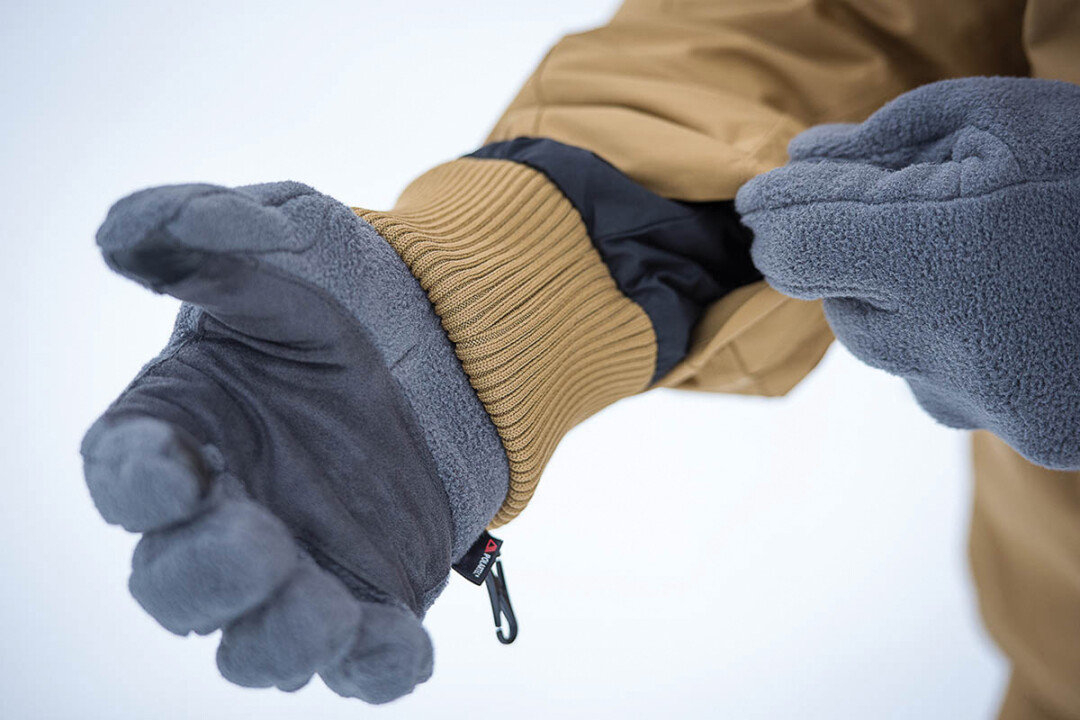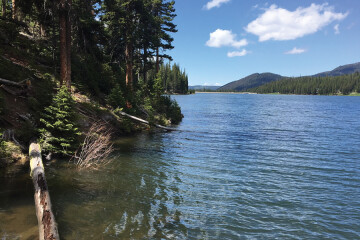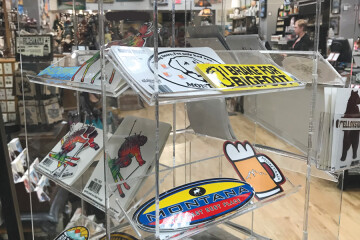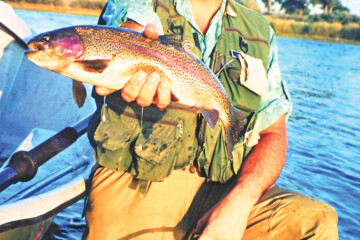Heads, Fingers, Feet & Toes
Like the song says, if you want to be happy and warm when outdoors, make sure these areas are cozy and comfortable. I know that I took some liberty with the lyrics of the original campfire song, but if these areas are not covered, then misery will follow. It doesn’t matter how good the company is, or how hot the fishing and hunting is. Cold ruins the day.
When ice fishing, late-season shooting, snowmobiling, skiing, shoveling snow, skating or simply enjoying the frigid winter weather, keep these areas warm. If you live in Montana, you better be singing this song!
HEADS
Wear a hat! Most of our body heat escapes from the head. The best hat should also have ear flaps. Cold ears, part of your head, will end the day in a hurry. Back in the day, the true Montana Hat was called a Stormy Kromer hat. This wool, brimmed hat had built in ear flaps. It seemed like everyone in Montana wore one. It was made in 1903 and is still on top today. Kromers are durable, practical and warm.
Noses and faces also need some consideration. Use a moisturizer on your skin before you head into the frigid winter. Consider the weather, so you are prepared for the snow or wind. Sun reflecting off the snow and ice can also produce sunburns and temporary blindness. Consider decent eyewear, goggles, or reflective sunglasses.
You may also want to consider using a polar fleece head, neck, and face cover. A Capuche/ Balaclava style headgear is a made-in-the-west product that will fit the bill. It can be pulled down around your neck or drawn up over your head. You can adjust the opening so that just your eyes are exposed. This garment can be a life saver especially if on a snowmobile or in the wind.
FINGERS
Gloves, hand warmers, and hand lotion helps keep your fingers functioning. You need the fingers to feel, and move when tying knots, and dealing with handles, augers, triggers, or other manipulatives. Once the fingers get cold, you are done. Wear decent gloves and have warm pockets to warm up the digits. Carry some extra cheapo gloves so you can swap out wet gloves. Keep your hand warmers dry and in your pockets. Gloves that have fingers, that fold free, are also a good idea. Your hands stay warm while the fingers are exposed and free when needed.
Montana fly fishermen use fingerless gloves to help them cast during the winter months. Have a handwarmer stashed in your pocket to make sure you can warm your digits up on occasion. A hand muff is also a good idea. There are many synthetic products available but for some, wool is the way to go. Others find wool itchy and use other waterproof and weatherproof fabrics. When winter fishing, you need to tie knots and manage the wet line. This can get nippy! This is when a sturdy hand lotion or balm will help keep your hands dry, soft, and functional.
FEET
Start with quality socks. You have many great fabrics to choose from. Consider a liner sock that wicks moisture away from the skin. Use constrictive leg wear and slide a knee sock over both. Dressing in layers keeps heat in and clothing will not shift from movement. Avoid cotton garments that will absorb moisture and make you cold. Disposable toe warmers are also a good addition inside your boots. Wear boots that fit well and have a liner. Waterproof is important especially if you are on a slushy lake.
The classic, made-in-Montana choice, would be the Schnee Hunters Pack boot. When I first came to Montana, this was the boot I was told to buy. 20 years later, I am still wearing the original pair. My toes stay warm, dry, and the boot is designed to fit properly. The action traction tread gives great stability on ice and snow. Unlike other packs or muck boots, Schnee boots are designed for hiking. Hunting several miles is comfortable. The shape of the toe also fits a stirrup, when riding a horse. Other boot styles and brands may be more popular but the made-in-Bozeman Schnee Pack is simply the best.
TOES
The rest of your feet may feel fine but cold toes will ruin the day. Keep your feet and toes dry. Consider using foot powder. Don’t wear boots that are too tight. You need to be able to wiggle your toes. Normally, you need to buy boots a size larger than your feet, especially when buying muck boots and packs. Use the socks and liners you plan to wear when shopping to ensure a proper fit. Usually boots that look cool will be!
Using Toe Heaters is also an easy way to keep your tootsies toasty. These stick-on sacks attach to your sock and stay in place when you put on your boots. They generate heat in low oxygen thanks to their special proprietary blend of powdered materials.
If you take the dogs afield, have a mat or rug that you can lay on the snow or ice for them. You can also get booties for your fur buddies.
The rest of your wardrobe needs to be considered as well. Think layers! Your core is your torso. Start with a t-shirt, next a long-sleeved wicking shirt. Now add your favorite layers of Polar Fleece or Gore-Tex. Overlap your layers to seal in the heat. There are so many wonderful materials available today. Do your homework and find what is best for your needs. Layers can be added or removed as needed.
Constrictive torso and leg wear also improve circulation of blood, which carries warmth around the body. These tight fabrics wick away moisture and make you look slimmer and trimmer. Some folks do not like the snug feel, but the benefits outweigh the tightness. Make sure that you get the correct size. If they feel too snug, jump up a size. They make these fabrics for cold, hot, or deep freeze weather.
The more comfortable you are, the better you can function and enjoy your sport. Suffering leads to complaining and lack of attention. This is when accidents happen. If you get too cold, go home. Hypothermia is a dangerous issue. Now figure out what you need to improve your comfort for the next trip.
Keep your Heads, Fingers, Feet, and Toes toasty to ensure warm winter memories!



